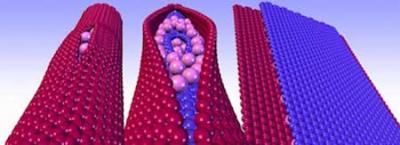Researchers at Rice University have shown that combining graphene nanoribbons, made with a process developed at Rice University, and a common polymer to create a material called Texas-PEG could have potential of aiding in treating damaged spinal cords in people.

The customized GNRs are highly soluble in polyethylene glycol (PEG), a biocompatible polymer gel used in surgeries, pharmaceutical products and in other biological applications. When the biocompatible nanoribbons have their edges functionalized with PEG chains and are then further mixed with PEG, they form an electrically active network that can help the severed ends of a spinal cord reconnect (neurons tend to grow on graphene because it’s a conductive surface).
The team says that other researchers are also experimenting with growing neurons on graphene, but are mainly focused on water-soluble graphene oxide, which is far less conductive than graphene, or nonribbonized structures of graphene. The Rice team has developed a way to add water-solubilizing polymer chains to the edges of the nanoribbons that preserves their conductivity while rendering them soluble, and is starting to see the potential for this in biomedical applications.
The Texas-PEG only consists of about 1% nanoribbons, but that’s said to be enough to form a conductive scaffold through which the spinal cord can reconnect. According to reports, Texas-PEG succeeded in restoring function in a rodent with a severed spinal cord in a procedure performed at Konkuk University in South Korea. The material reliably allowed motor and sensory neuronal signals to cross the gap 24 hours after complete transection of the spinal cord and almost perfect motor control recovery after two weeks.
The researchers stated that this is a major advance over previous work with PEG alone, which gave no recovery of sensory neuronal signals over the same period of time and only 10% motor control over four weeks.